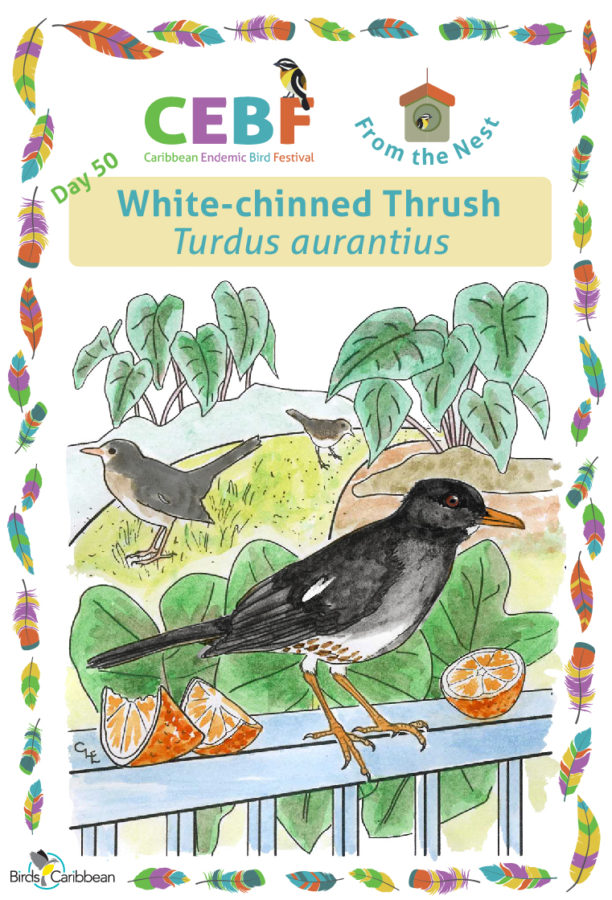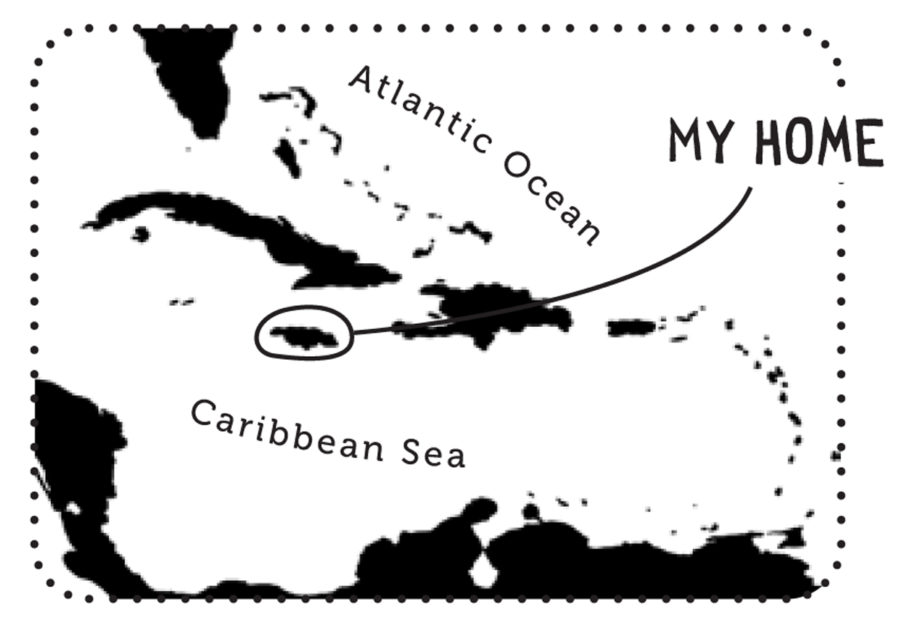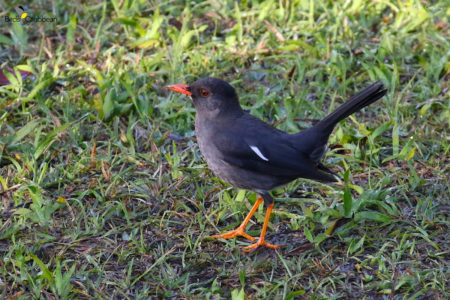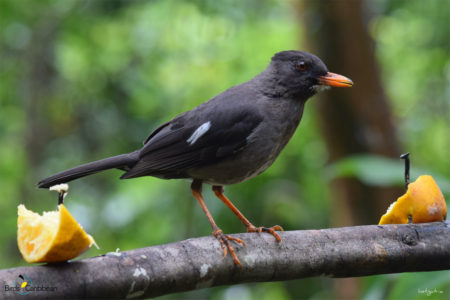Celebrate the Caribbean Endemic Bird Festival (CEBF) with us in our virtual “From the Nest” edition! Have fun learning about a new endemic bird every day. We have colouring pages, puzzles, activities, and more. Download for free and enjoy nature with your family at home.

Endemic Bird of the Day: White-chinned Thrush
 Walk along any wooded road or trail in Jamaica and you will probably spot a medium-sized dark bird hopping along, with its tail cocked up. This will be a White-chinned Thrush, one of the most common Jamaican endemic birds. It is found in the lowlands, mountains, gardens, and woodlands.
Walk along any wooded road or trail in Jamaica and you will probably spot a medium-sized dark bird hopping along, with its tail cocked up. This will be a White-chinned Thrush, one of the most common Jamaican endemic birds. It is found in the lowlands, mountains, gardens, and woodlands.
Look again to confirm your identification and you will note a dark grey-black body, bright orange legs and bill, and tiny white epaulettes on the wings. Do not expect to see the white chin; it is so small that you can barely make it out even if you are using binoculars. There are similar looking endemic thrushes in similar habitats in the forests of several other islands, including the Red-legged Thrushes of the Bahamas, Cuba, Hispaniola, Puerto Rico, and Dominica. Most of them have much more obvious white or spotted patches below their bills.
The local name – Hopping Dick – is much more descriptive. Hopping is what this bird does! Look for it bouncing over grasses and twigs on the margins of forest patches or along the larger branches of trees as it forages for insects, worms, snails, lizards, berries and seeds. As it hops along, it frequently pauses, looking around to check for predators.
Hopping is supposedly more energy efficient for small birds, such as grassquits and warblers that feed in grasses or fine twigs. Larger birds, such as doves and crows, usually walk as they feed on the forest floor or on large branches. Some thrushes feed mostly on the ground, others mainly in trees. Some hop, some walk and others do both. The White-eyed Thrush, Jamaica’s other endemic thrush, is rarely seen on the ground.
Why is the White-chinned Thrush known as Hopping Dick? It comes from the name “Dicky Bird” – the collective name for common garden birds in the seventeenth century, when many small birds in Jamaica were first named by the British. Learn more about this species, including its range, photos, and calls here.
Colour in the White-chinned Thrush!
Download the page from Endemic Birds of the West Indies Colouring Book. Use the drawing above or photo below as your guide, or you can look up pictures of the bird online or in a bird field guide if you have one. Share your coloured-in page with us by posting it online and tagging us @BirdsCaribbean #CEBFfromthenest
Listen to the song of the White-chinned Thrush
The White-chinned Thrush has a variable musical song in the breeding season, also a shrill whistle p’lice, p’lice and a repeated chicken-like clucking.
Puzzle of the Day
Click on the images below to do the puzzles. You can make the puzzle as easy or as hard as you like – for example, 6, 8, or 12 pieces for young children, all the way up to 1,024 pieces for those that are up for a challenge!


Activity of the Day
FOR KIDS & ADULTS: Check out the two short videos of the White-chinned Thrush in Jamaica. The first one shows a bird with a small lizard in its beak. In the second video, a parent is feeding its tiny naked chick with insects. Videos by AvesPuertoRico Felpe.

This birds family has a sort of beautiful singing nice to enjoy when rainy day is ending.
We agree, Andres, they have a beautiful singing voice indeed! Thanks for your comment!